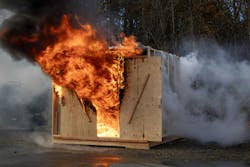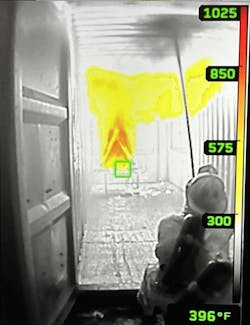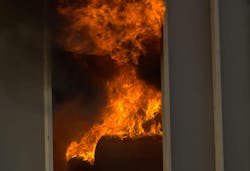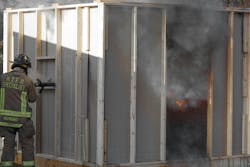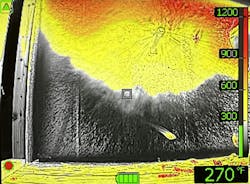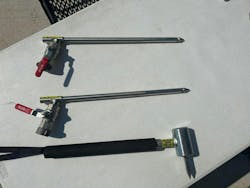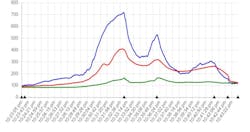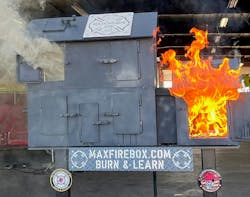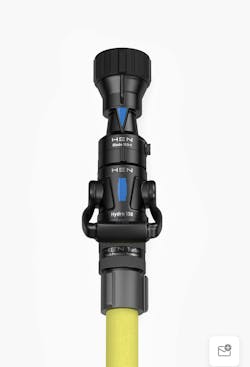Fire Studies: Fireground Strategies: The Science of Suppression vs. Extinguishment
At its core, water on the fire means more than just applying water to flaming combustion. Although the fire service has benefited greatly from advances in technology on many levels, the essence of its mission still is the effective application of water. This critically depends on clues that are within the compartment area, including directly outside of the compartment, where combustion is occurring. If this sounds vague, it can be. Efficiency is related directly to effective water application. How each respective department performs water application is relative to the equipment that’s carried on each apparatus. However, although the equipment might change over the years, the science of energy absorption remains constant.
The science of suppression
A wise chief and mentor of mine, Chief Joe Starnes, engrained into my mind that water and flaming combustion can’t occupy the same space. One of them must win. If water is to be the winner, some variables must be measured.
First and foremost, the transfer of energy from one fuel package to another fuel package can be dependent on fuel types, density, surface area and tension, and orientation of fuel from the energy source. Absorbing that energy for suppression, instead of allowing energy to spread, follows a similar path to being successful. The size of the water droplet, the location in relation to the direction of the energy and the delivery methodology must be correct based on the conditions that are encountered.
A little bit about combustion: Combustion is both a gas and pressure event. Combustion growth follows three basic physics considerations: ignition of fuel results in an increase in temperature; an increase in temperature results in an increase in energy; and an increase in energy results in an increase in pressure. Therefore, the application of water as a cooling agent must have the capabilities of overwhelming the pressure that’s formed through the combustion process as well as the energy that’s created and spread from fuel package to fuel package. Arriving engine companies must make the proper calculations for discharge pressures/water delivery to not only cool the thermal layer during suppression but to have the force behind the delivery to sustain its position in the thermal layer to achieve cooling. The force that’s delivered in psi is just as influential as the gpm that are applied to the thermal area.
Consider this example: In a single average-size compartment is an upholstered sofa that has a wood frame, polyurethane cushions and polyester batting/covering. “Heat Release Rate Characterization of NFPA 1403 Compliant Training Fuels” (John Regan, Fire Technology, February 10, 2021) explains that a heat release rate of 3.7 MW can be reached while this sofa burns. In calculations to determine the needed fire flow, the delivery rate of approximately 168 gpm would be necessary to facilitate suppression and, eventually, extinguishment. The rate is necessary to counteract the pressure from the combustion process. However, in an indirect (ceiling) application of water for five seconds, only approximately 14 gpm would be needed to achieve suppression.
Therefore, it’s both the amount of water and the correct application of that water that lead to success on the fireground.
Suppression vs. extinguishment
The process of firefighting involves both suppression and extinguishment. Consider, per Merriam-Webster, suppression: to inhibit the growth or development of; and extinguishment: to cause to cease burning.
When firefighters enter a burning structure or building, the path toward the compartment of origin is laden with energy, fuel/smoke and agents of flame spread that must be dealt with during the operations. The application of water in the correct size, shape and location begins the suppression process while traversing toward the seat of the fire for extinguishment.
Application methods must get moisture into the energy space with the most effective capabilities to absorb a significant amount of energy, delivered at a rate that counteracts combustion forces and pressure and expanded at a rate that can improve conditions for the suppression team moving forward. This includes moisture into the elevated areas, in the right droplet size, to be effective. This is accomplished with varying types of equipment, although this might be considered unorthodox to some firefighters.
When firefighters talk about water application, nozzle choice can create some great conversations and debates regarding the “best” nozzle for suppression and extinguishment. Most of the time, this debate is limited to smooth bore and combination nozzle applications. That said, what about all the nozzles—not only those that are legacy equipment on one’s apparatus but also the nozzles that are being introduced into today’s arsenal of choices for suppression?
There are nozzles that apply broken streams, nozzles that apply high-efficiency streams and some that apply a fine water mist to aid in smoke contraction and cooling within a compartment. All of these nozzles can be utilized on various types of incidents, following the science of suppression and extinguishment.
Regardless of the nozzle that’s in use, the efficiency and competency of the operator (firefighter) to make the correct application is paramount. So, consider utilizing the application nozzles that are available on your apparatus the next time that your company performs live fire training for determining alternate uses and applications that can result in quicker application, suppression and extinguishment.
Team efficiency
It’s critical for those who are charged with firefighting to understand the science and the influence of both suppression and extinguishment during an incident and how each aspect can lead to safe and effective fireground operations.
Coordination of ventilation, search and suppression operations relies significantly on water application accuracy for energy absorption, which can positively influence rescue and air track management.
Team efficiency for companies that perform suppression and extinguishment includes mastering the ability to identify clues within the compartment, considering all possible options within the scope and availability of all equipment that’s on the apparatus, and making the right choices for water delivery and successful outcomes for the operation.
PRODUCT SPOTLIGHT
Fire Behavior Training
The Max Fire Box Phase II eliminates long lectures with its “don’t tell me, show me,” burn-and-learn approach. Firefighters master thermal imaging, fire behavior and ventilation in an interactive environment. Dynamic one- and two-story burn scenarios provide realistic, hands-on training to enhance safety, decision-making and tactical proficiency.
High-Efficiency Nozzles
HEN, or High Efficiency Nozzles, revolutionize firefighting by combining the versatility of a solid in-line blade stream with a traditional smooth bore. The world’s first combination smooth bore nozzle lets firefighters switch between a wide in-line blade pattern for expanded coverage and cooling and a tight smooth bore stream for reach and penetration.
Product Spotlight
Fire Behavior Training
The Max Fire Box Phase II eliminates long lectures with its “don’t tell me, show me,” burn-and-learn approach. Firefighters master thermal imaging, fire behavior and ventilation in an interactive environment. Dynamic one- and two-story burn scenarios provide realistic, hands-on training to enhance safety, decision-making and tactical proficiency.
maxfirebox.com
High-Efficiency Nozzles
HEN, or High Efficiency Nozzles, revolutionizes firefighting by combining the versatility of a solid in-line blade stream with a traditional smoothbore. The world’s first combination smoothbore nozzle lets firefighters switch between a wide in-line blade pattern for expanded coverage and cooling and a tight smoothbore stream for reach and penetration.
hennozzles.com
About the Author
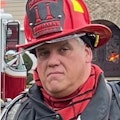
Michael Daley
MICHAEL DALEY, who is a Firehouse contributing editor, recently retired as a 37-year veteran who served as a captain and department training officer in Monroe Township, NJ. He is a staff instructor at multiple New Jersey fire academies and is an adjunct professor in the Fire Science Program at Middlesex County College. Daley is a nationally known instructor who has presented at multiple conferences, including Firehouse Expo and Firehouse World. His education includes accreditations as a Chief Training Officer and a Fire Investigator, and he completed the Craftsman Level of education with Project Kill the Flashover. Daley is a member of the Institution of Fire Engineers and a FEMA Instructor and Rescue Officer with NJ Urban Search and Rescue Task Force 1. He operates Fire Service Performance Concepts, which is a training and research firm that delivers and develops training courses in many fire service competencies.
